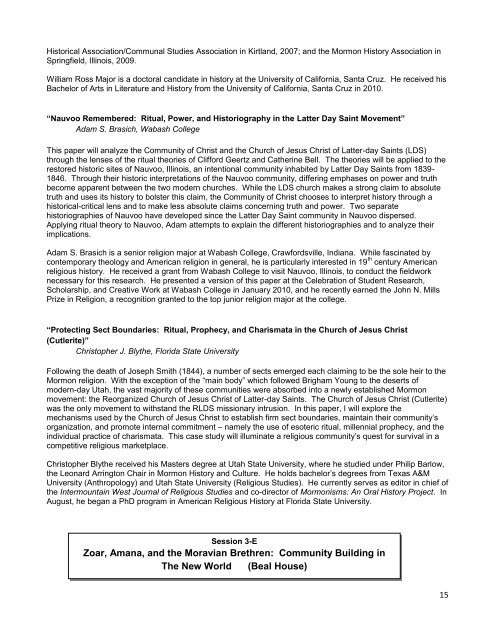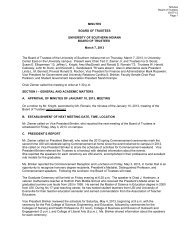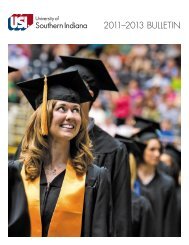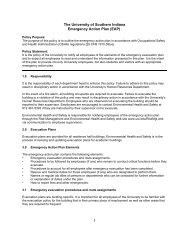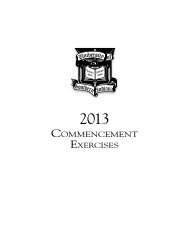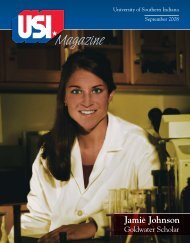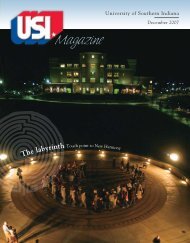Communal Studies Association, 2010 New Harmony, Indiana ...
Communal Studies Association, 2010 New Harmony, Indiana ...
Communal Studies Association, 2010 New Harmony, Indiana ...
You also want an ePaper? Increase the reach of your titles
YUMPU automatically turns print PDFs into web optimized ePapers that Google loves.
Historical <strong>Association</strong>/<strong>Communal</strong> <strong>Studies</strong> <strong>Association</strong> in Kirtland, 2007; and the Mormon History <strong>Association</strong> inSpringfield, Illinois, 2009.William Ross Major is a doctoral candidate in history at the University of California, Santa Cruz. He received hisBachelor of Arts in Literature and History from the University of California, Santa Cruz in <strong>2010</strong>.“Nauvoo Remembered: Ritual, Power, and Historiography in the Latter Day Saint Movement”Adam S. Brasich, Wabash CollegeThis paper will analyze the Community of Christ and the Church of Jesus Christ of Latter-day Saints (LDS)through the lenses of the ritual theories of Clifford Geertz and Catherine Bell. The theories will be applied to therestored historic sites of Nauvoo, Illinois, an intentional community inhabited by Latter Day Saints from 1839-1846. Through their historic interpretations of the Nauvoo community, differing emphases on power and truthbecome apparent between the two modern churches. While the LDS church makes a strong claim to absolutetruth and uses its history to bolster this claim, the Community of Christ chooses to interpret history through ahistorical-critical lens and to make less absolute claims concerning truth and power. Two separatehistoriographies of Nauvoo have developed since the Latter Day Saint community in Nauvoo dispersed.Applying ritual theory to Nauvoo, Adam attempts to explain the different historiographies and to analyze theirimplications.Adam S. Brasich is a senior religion major at Wabash College, Crawfordsville, <strong>Indiana</strong>. While fascinated bycontemporary theology and American religion in general, he is particularly interested in 19 th century Americanreligious history. He received a grant from Wabash College to visit Nauvoo, Illinois, to conduct the fieldworknecessary for this research. He presented a version of this paper at the Celebration of Student Research,Scholarship, and Creative Work at Wabash College in January <strong>2010</strong>, and he recently earned the John N. MillsPrize in Religion, a recognition granted to the top junior religion major at the college.“Protecting Sect Boundaries: Ritual, Prophecy, and Charismata in the Church of Jesus Christ(Cutlerite)”Christopher J. Blythe, Florida State UniversityFollowing the death of Joseph Smith (1844), a number of sects emerged each claiming to be the sole heir to theMormon religion. With the exception of the ―main body‖ which followed Brigham Young to the deserts ofmodern-day Utah, the vast majority of these communities were absorbed into a newly established Mormonmovement: the Reorganized Church of Jesus Christ of Latter-day Saints. The Church of Jesus Christ (Cutlerite)was the only movement to withstand the RLDS missionary intrusion. In this paper, I will explore themechanisms used by the Church of Jesus Christ to establish firm sect boundaries, maintain their community‘sorganization, and promote internal commitment – namely the use of esoteric ritual, millennial prophecy, and theindividual practice of charismata. This case study will illuminate a religious community‘s quest for survival in acompetitive religious marketplace.Christopher Blythe received his Masters degree at Utah State University, where he studied under Philip Barlow,the Leonard Arrington Chair in Mormon History and Culture. He holds bachelor‘s degrees from Texas A&MUniversity (Anthropology) and Utah State University (Religious <strong>Studies</strong>). He currently serves as editor in chief ofthe Intermountain West Journal of Religious <strong>Studies</strong> and co-director of Mormonisms: An Oral History Project. InAugust, he began a PhD program in American Religious History at Florida State University.Session 3-EZoar, Amana, and the Moravian Brethren: Community Building inThe <strong>New</strong> World (Beal House)15


